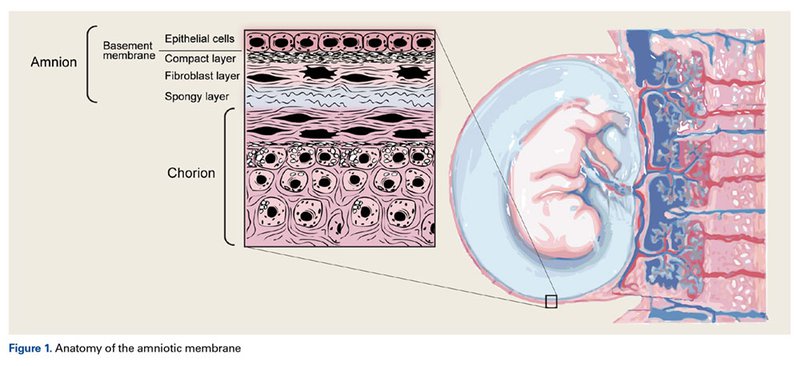Ever heard of amniotic tissue being linked to ED treatment? It might sound like something from a sci-fi novel, but it's a real and fascinating topic in the medical world right now.
Dive into this podcast episode as I unravel the intricacies and potential breakthroughs of this innovative approach.
Get ready for a journey that might just change the way we look at ED treatments forever!
- Episode Video
- What is Amniotic Tissue?
- Why is Amniotic Tissue of Interest?
- The Promise of Amniotic Tissue in ED Treatment
- Research and Results
- Challenges and Concerns
- Proceed with Caution
- Final Thoughts
- FREEBIES!
Episode Video
ED is a prevalent issue for many men. This impacts their physical and psychological well-being.
Over the years, medical practitioners have pursued innovative solutions to this age-old problem. One such approach of exploration is the use of amniotic tissue. But what is amniotic tissue. Also, how can it potentially assist in treating ED?
What is Amniotic Tissue?

Amniotic tissue is a thin membrane surrounding the baby within the mother's womb. It's the layer beneath the fluid, part of the amniotic membrane, and placenta. Essentially, the tissue is adjacent to the fluid and forms a sac around the baby.
Why is Amniotic Tissue of Interest?
The spotlight on amniotic tissue arises from its unique properties. Rich in growth factors, this tissue assists in tissue repair. It also contains cytokines, proteins released from white blood cells that play a role in immune function.
Such properties are essential when understanding the causes of ED. As we know, ED often result from inflammation leading to poor blood flow to the penis.
In addition, other factors contributing to ED include hormone imbalances, nerve damage, psychological issues, and certain lifestyle habits.
The Promise of Amniotic Tissue in ED Treatment
Recent studies have sparked an interest in utilizing amniotic tissue’s capacity to treat ED. Given the tissue's capacity to heal damaged nerves and blood vessels. This capacity is speculated to be beneficial for ED.
The amniotic membrane's porous nature absorbs nutrients and growth factors. This results in fostering a conducive environment for cellular growth and tissue repair.
The tissue also contains growth factors like transforming growth factor-beta (TGF-β), vascular endothelial growth factor (VEGF), and platelet-derived growth factor (PDGF). All of these growth factors can stimulate new blood vessels and nerve growth.
Research and Results
While some studies indicate potential benefits of amniotic tissue in ED treatment, they are predominantly clinical trials.
Research from China in 2015 showed promising results using embryonic tissue for ED resulting from nerve damage. Similarly, a 2016 Turkish study found improvements in ED caused by Peyronie's using amniotic tissue grafts. U.S researchers in 2017 also reported potential benefits.
However, these studies need further validation. The main concern remains the viability of processed and desiccated amniotic tissue.
Challenges and Concerns
However, integrating amniotic tissue for ED is still in its developing stages. Also, its efficacy remains under scrutiny.
Another is the FDA hasn't yet approved this treatment and even classifies it as a drug.
There's also the challenge of processing. After childbirth, the placenta (from which the amniotic membrane is derived) is processed in labs where it's dried and sterilized. This processing could compromise the functionality of the tissue. Also, some research suggests that the processed tissue might not have any live stem cells. This research diminishes its potential effectiveness.
Proceed with Caution
It's crucial for those considering this treatment to understand the current limitations and uncertainties. Being in a gray regulatory zone and with safety concerns, patients and providers must tread cautiously.
As for many clinics, including mine, the wait for concrete data continues.
Final Thoughts
The application of amniotic tissue in treating ED is an exciting development, yet it is still in the experimental phase. While the concept holds promise, the complexities involved in processing and utilizing the tissue raise questions about its immediate application.
The pursuit of an ED-free life continues to motivate researchers to explore new approaches and amniotic tissue might indeed become a breakthrough. However, more comprehensive studies, FDA approval, and standardization are required to ascertain its role in treating ED. Until then, it's wise to stay informed and cautious about this emerging approach in medical treatment. If you're considering this option, make sure to consult with medical professionals who are well-versed in the current research and regulations.
Additional Resources
Want to regain control of your sex life? I'm going to give you this book and a 30 day trial on the Modern Man Club for FREE!
The book is the 5 Common Costly Mistake Men Make When Facing ED. This is how you can have a rock hard erection, enjoy more sex, be confident in demand, and improve your intimacy without ED medication.
Uncover it all in my FREE eBook available to download now: The 5 Common Costly Mistakes Men Make When Facing Erectile Dysfunction.

